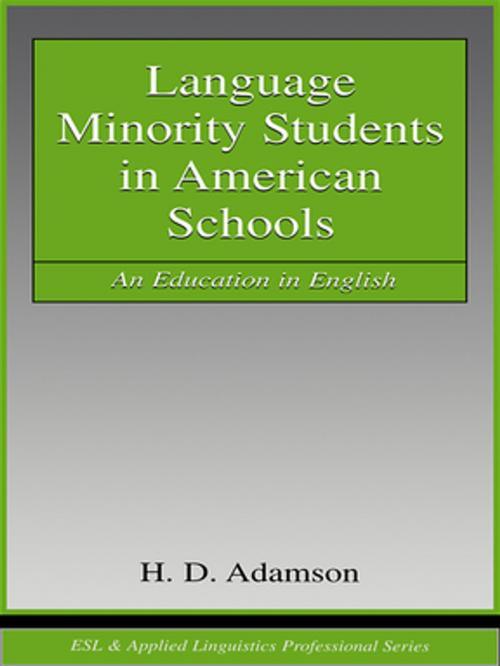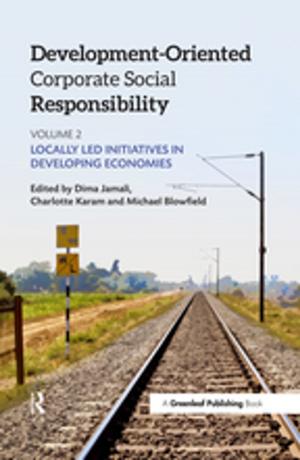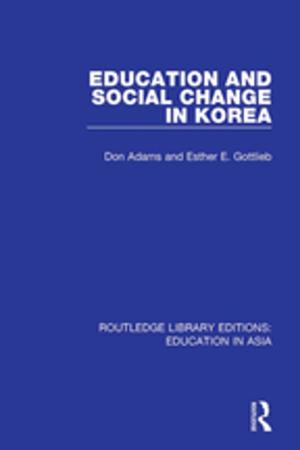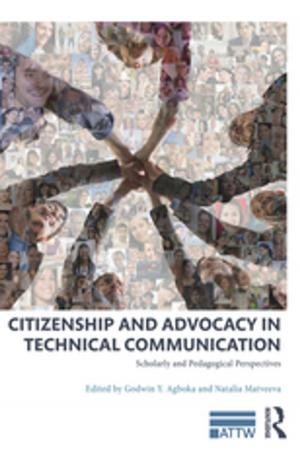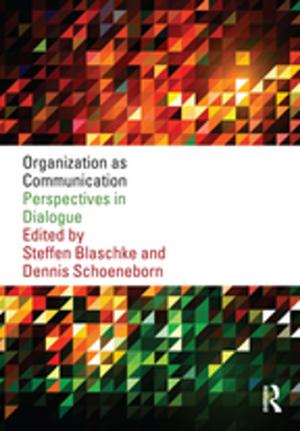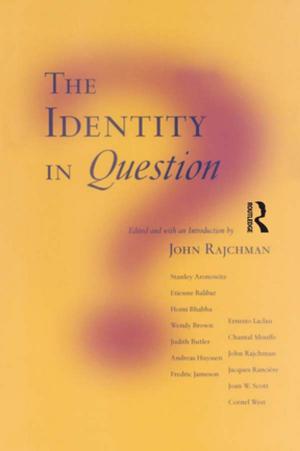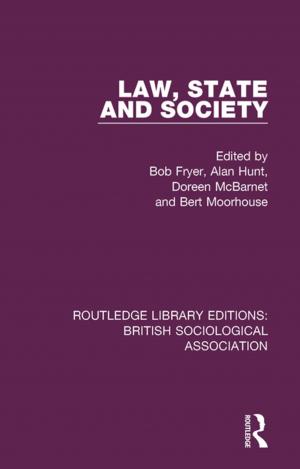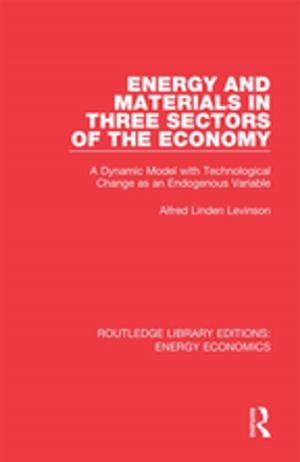Language Minority Students in American Schools
An Education in English
Nonfiction, Reference & Language, Education & Teaching, Educational Theory, Bilingual Education, Teaching| Author: | H. D. Adamson | ISBN: | 9781135626020 |
| Publisher: | Taylor and Francis | Publication: | March 23, 2005 |
| Imprint: | Routledge | Language: | English |
| Author: | H. D. Adamson |
| ISBN: | 9781135626020 |
| Publisher: | Taylor and Francis |
| Publication: | March 23, 2005 |
| Imprint: | Routledge |
| Language: | English |
This book addresses questions of language education in the United States, focusing on how to teach the 3.5 million students in American public schools who do not speak English as a native language. These students are at the center of a national debate about the right relationship among ESL, bilingual, and mainstream classes. Bilingual education has been banned by constitutional amendment in California and Arizona, and similar amendments are being considered in other states. Language Minority Students in American Schools: An Education in English places this debate and related issues of teaching standard English to speakers of nonstandard dialects, such as black English, within the larger context of language acquisition theory and current methods of language teaching.
Adamson draws from the large body of sociolinguistic, psycholinguistic, and educational research, and on his own experience as an English teacher in the U.S. and overseas, to shed light on some of these controversies and on the cognitive, cultural, public policy, and practical issues involved in educating English language learners. Presenting all sides of the issues fairly, he offers a strong endorsement for bilingual and bidialectical education based on programs designed and administered according to the principles discussed in the book and supported by language acquisition theory and classroom research.
A strength of the book is the inclusion of original research conducted in a middle school enrolling a majority of Latino students. This research contributes to the field of language education by providing a detailed description of how English language learners study content subjects. Examples from the study are used to illustrate a discussion of Vygotskian learning principles and the relationship between the students' home and school cultures.
Language Minority Students in American Schools: An Education in English is intended for students who are preparing to become teachers of English as a second language, and for teachers of other subjects who work with English language learners.
This book addresses questions of language education in the United States, focusing on how to teach the 3.5 million students in American public schools who do not speak English as a native language. These students are at the center of a national debate about the right relationship among ESL, bilingual, and mainstream classes. Bilingual education has been banned by constitutional amendment in California and Arizona, and similar amendments are being considered in other states. Language Minority Students in American Schools: An Education in English places this debate and related issues of teaching standard English to speakers of nonstandard dialects, such as black English, within the larger context of language acquisition theory and current methods of language teaching.
Adamson draws from the large body of sociolinguistic, psycholinguistic, and educational research, and on his own experience as an English teacher in the U.S. and overseas, to shed light on some of these controversies and on the cognitive, cultural, public policy, and practical issues involved in educating English language learners. Presenting all sides of the issues fairly, he offers a strong endorsement for bilingual and bidialectical education based on programs designed and administered according to the principles discussed in the book and supported by language acquisition theory and classroom research.
A strength of the book is the inclusion of original research conducted in a middle school enrolling a majority of Latino students. This research contributes to the field of language education by providing a detailed description of how English language learners study content subjects. Examples from the study are used to illustrate a discussion of Vygotskian learning principles and the relationship between the students' home and school cultures.
Language Minority Students in American Schools: An Education in English is intended for students who are preparing to become teachers of English as a second language, and for teachers of other subjects who work with English language learners.
